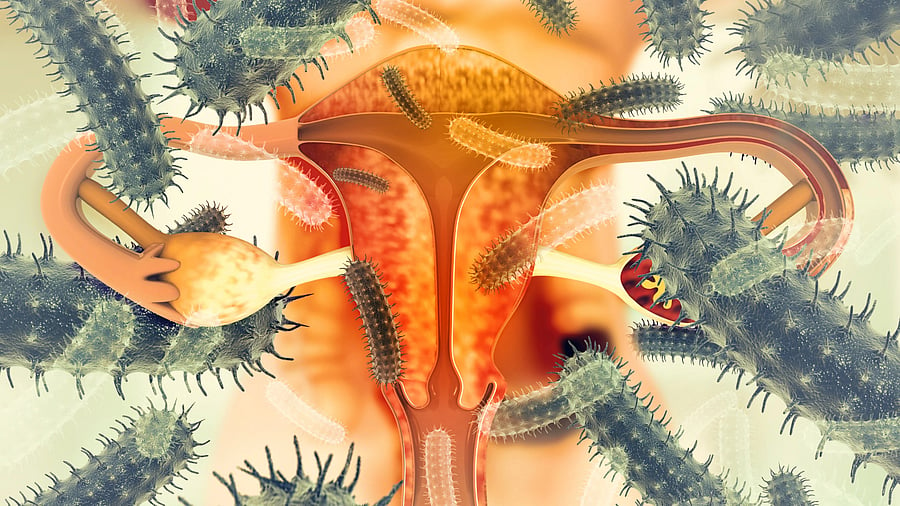
Image for representation.
Credit: iStock photo
The ovary, a vital part of the female reproductive system located beside the uterus, stores eggs and can develop abnormalities leading to tumours or cancer. While simple cysts are often monitored, complex cysts require management.
Tumours arise from different ovarian components: carcinomas from outer layers, stromal tumours from the ovarian substance, and germinomas from egg-related tissues.
Tumour type and progression often relate to the patient’s age; germinomas (affecting younger women) generally have better outcomes, while carcinomas (common in older women) carry poorer prognoses. Ovarian cancer is more common in older women, though its exact causes are unclear. Risk factors include obesity, advanced age, nulliparity (having no children), late childbirth, and endometriosis. Genetic mutations are significant, especially with a family history of ovarian or related cancers, placing close relatives at higher risk.
Signs & symptoms
In the early stages, ovarian cancer may present as a small, unnoticed nodule. As the tumour grows, it can pressure nearby organs, causing increased urination, constipation, indigestion, and bloating. Advanced stages can disrupt ovarian function, leading to menstrual irregularities. If cancer spreads, symptoms may worsen, causing abdominal swelling, indigestion, reduced appetite, and breathing difficulties.
Challenges in detection
Ovarian cancer often lacks symptoms in its early stages, making detection difficult. In women with larger abdomens, tumours may go unnoticed, and symptoms like bloating may be misattributed to gastrointestinal issues, delaying diagnosis.
Diagnostic tests
Key tests for early detection include:
Pelvic Ultrasound (USG) or Transvaginal Ultrasound (TVUS): Useful for spotting early ovarian cancer.
CA-125 blood test: Measures a protein often elevated in ovarian cancer, used alongside TVUS for screening.
MRI scan: Assesses localised disease.
CT scan: Detects advanced disease.
Whole-body PET-CT scan: Evaluates spread and stage.
Treatment options
Surgery is the primary treatment. In the early stages, fertility-preserving surgery may be possible; otherwise, total abdominal surgery is common, involving the removal of the uterus, ovaries, lymph nodes, and abdominal lining. In advanced cases, cytoreductive surgery aims to remove as much tumour as possible before chemotherapy. Chemotherapy is critical for microscopic disease. It’s usually given intravenously, but in advanced or recurrent cases, it may be administered intraperitoneally for greater effectiveness. Targeted therapy and immunotherapy are beneficial for metastatic or recurrent cancers, targeting tumour blood vessel growth to improve outcomes.
Genetic testing
Genetic testing is essential for risk assessment and treatment personalisation. Germline mutation analysis is performed for patients with a family history of cancer, while molecular testing aids in tailoring therapies for recurrent cancers resistant to standard treatments. Ovarian cancer treatment has evolved significantly, emphasising early detection and personalised care. Combining surgery, chemotherapy, and advanced therapies improves outcomes for patients at all disease stages, making awareness and proactive health measures crucial.
(The author is a senior consultant and in charge of radiation oncology at a leading chain of hospitals in Bengaluru.)